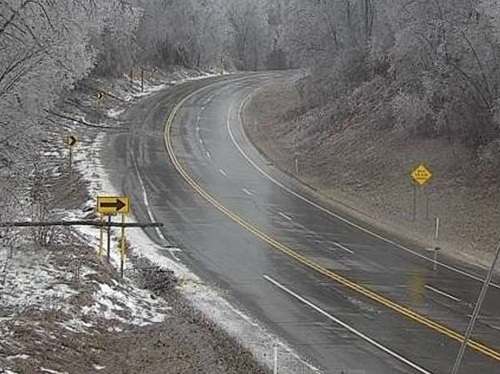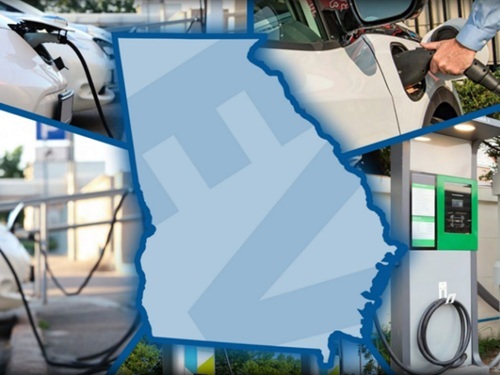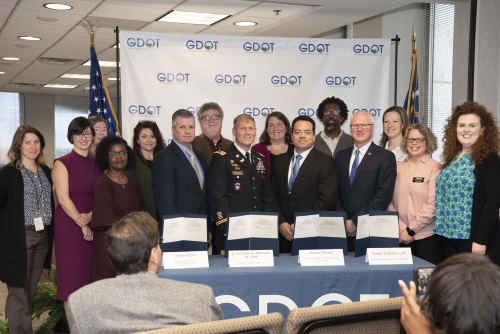The Georgia Department of Transportation signed an agreement on December 9 that aims to streamline the completion of certain approval processes for historic preservation efforts involving highway construction within the state.
[Above photo by the Georgia DOT.]
Touted as a “first-of-its-kind” Section 106 Programmatic Agreement by the Georgia DOT, the accord is the result of a two-year effort between the agency, the Federal Highway Administration, the U.S. Army Corps of Engineers Savannah District, the Advisory Council on Historic Preservation, the Georgia State Historic Preservation Office, and the state’s 20 federally recognized Native American Indian Tribes.

According to a statement from the Georgia DOT, the agreement establishes a framework for approving all types transportation projects throughout the state – from widening highways to the location of new bypasses – while protecting ancestral tribal lands.
[Pamela Baughman, Georgia DOT’s senior transportation archaeologist, explains in the video below some of what is involved in such “protection” where transportation projects are concerned in terms of complying with environmental regulations while preserving history.]
The agency added that it needed this new accord due to its “growing transportation program” that taps both federal and state funds and includes numerous projects subject to Section 106 required by FHWA and the USACE for project completion. Provisions of the accord include:
- Delegating routine Section 106 activities to Georgia DOT cultural resource professionals and allows the agency to assist in coordination with federally recognized American Indian tribes.
- Solidifies and clarifies how the agencies conduct tribal consultation, project review, post review discoveries, and identification and treatment of human remains in practical application.
- Addresses all resource types, both historic and archaeological, and ensures collaboration and efficiency in documentation where applicable.
 States
States
Podcast: Flashing LED Lights Can Boost Roadway Safety
December 5, 2025 States
States

